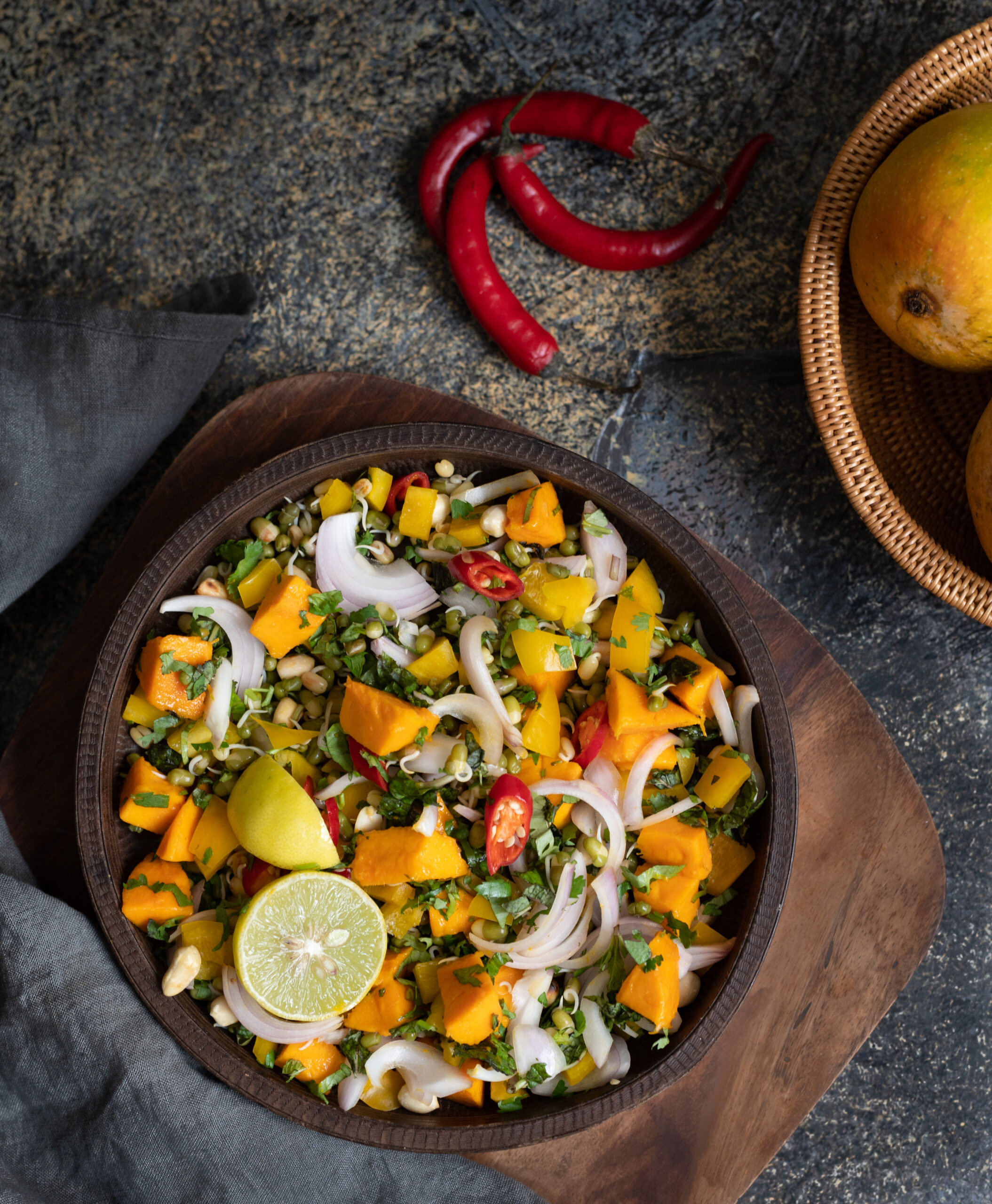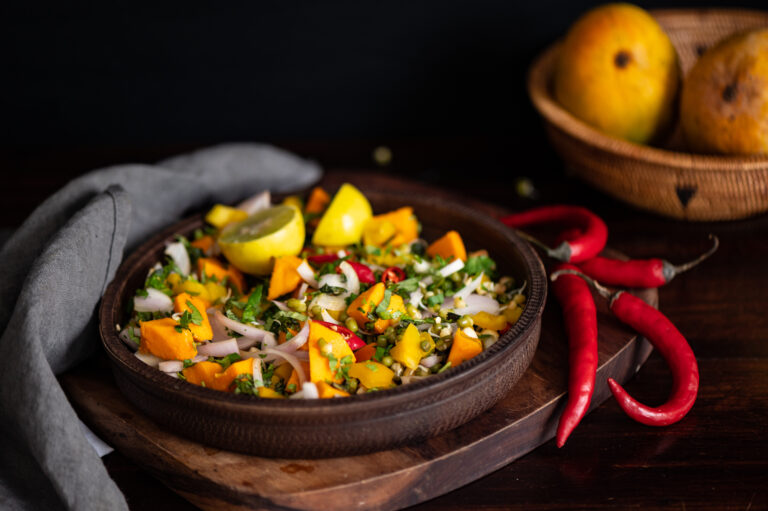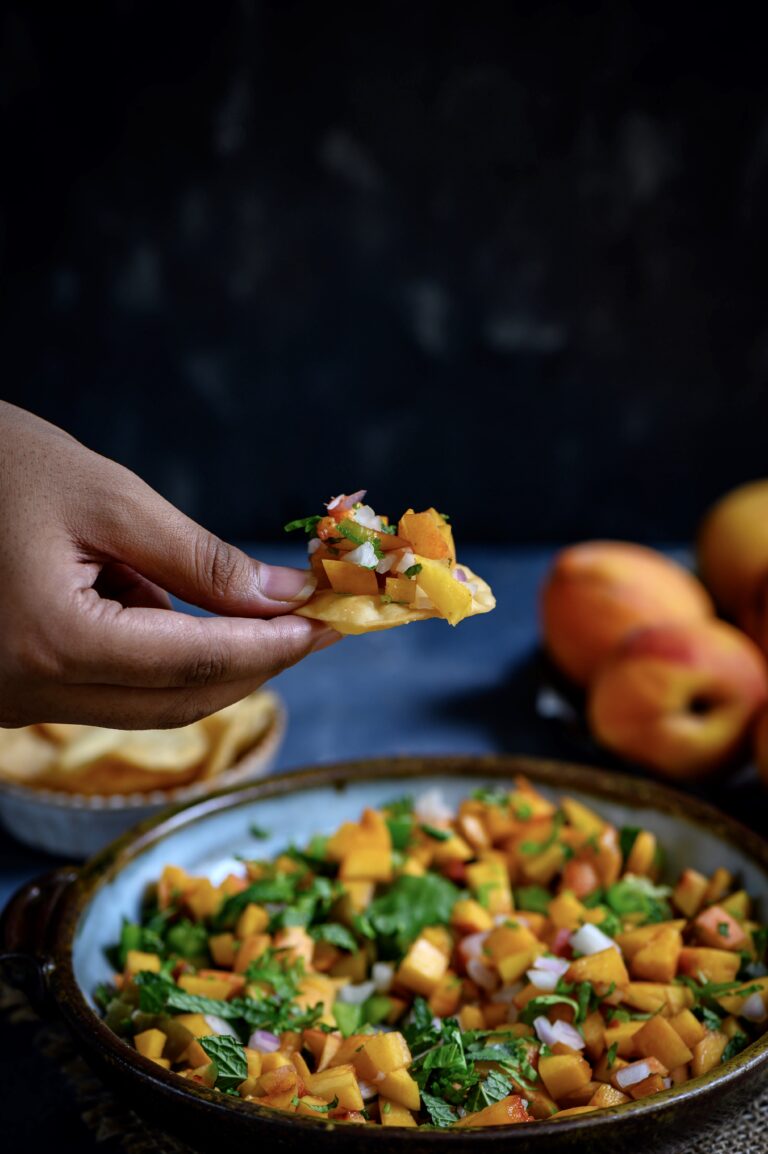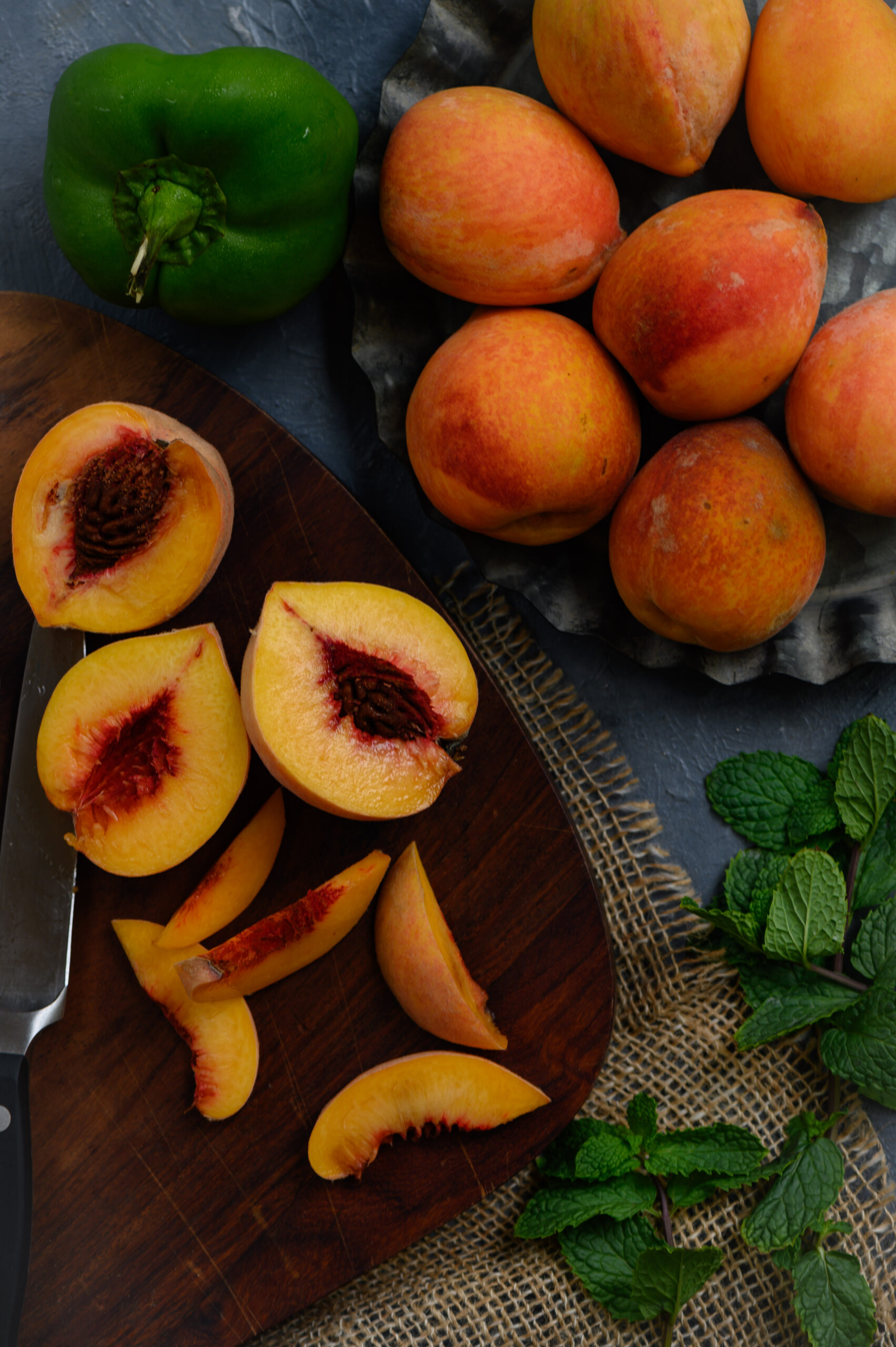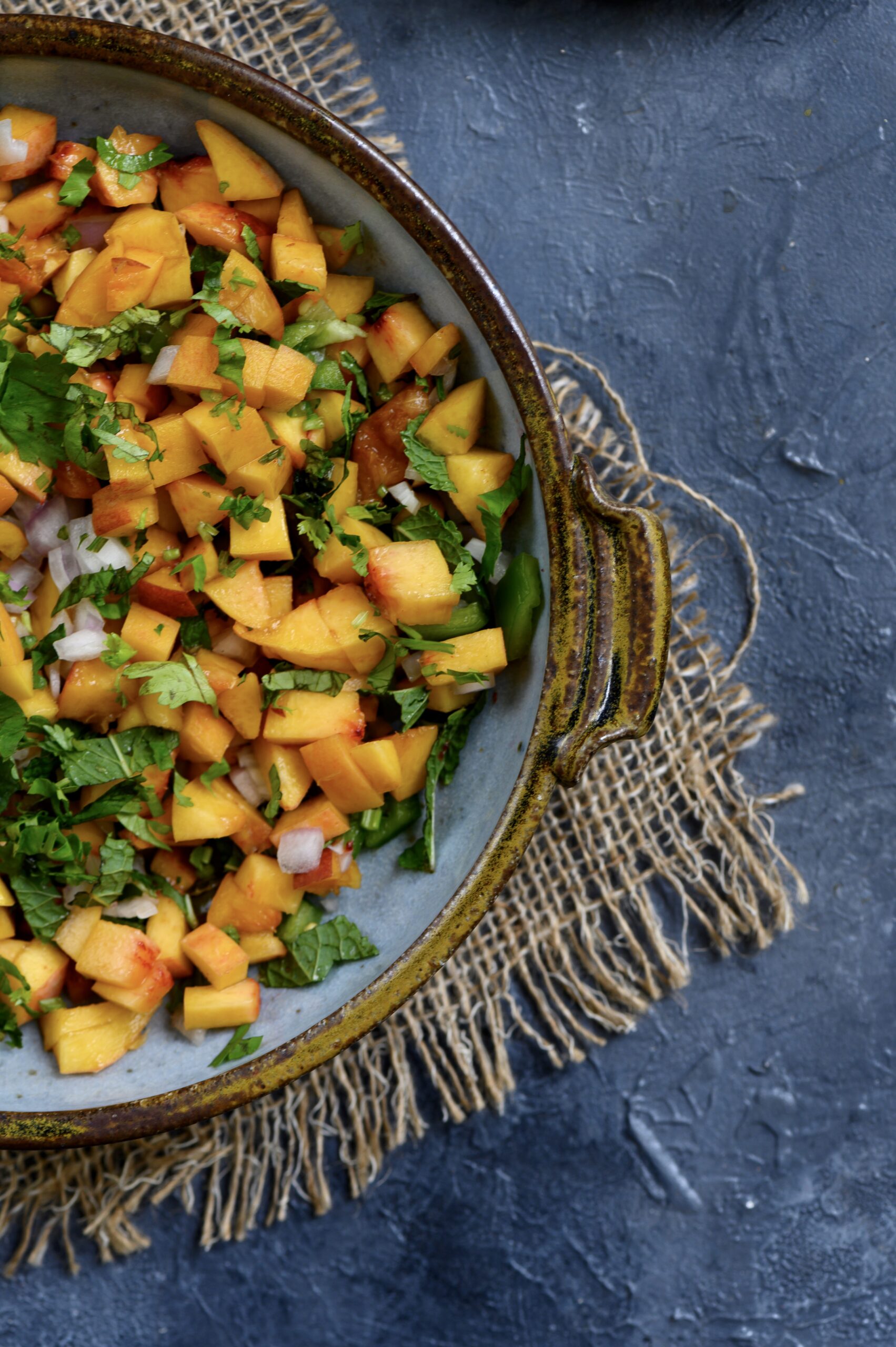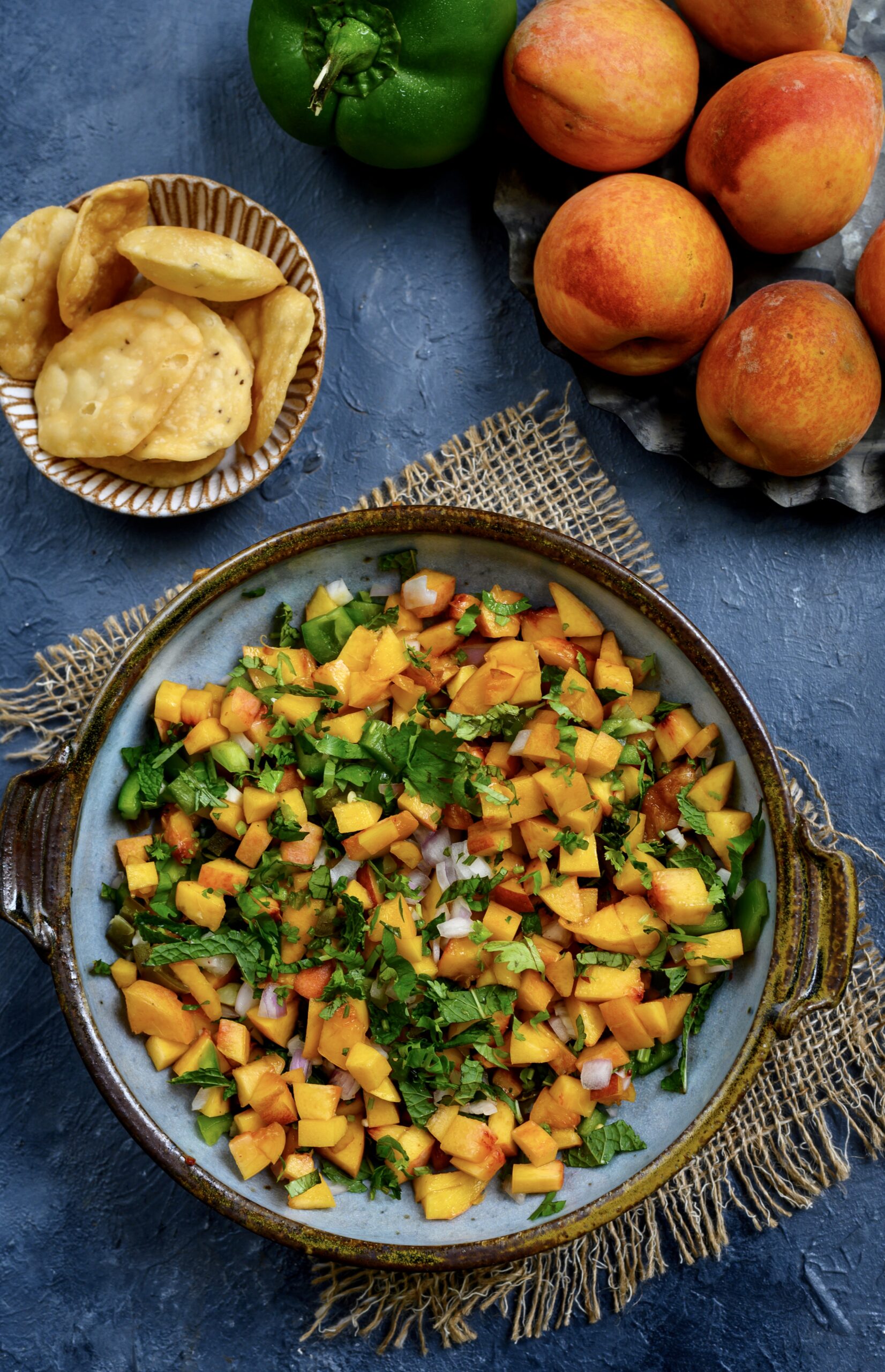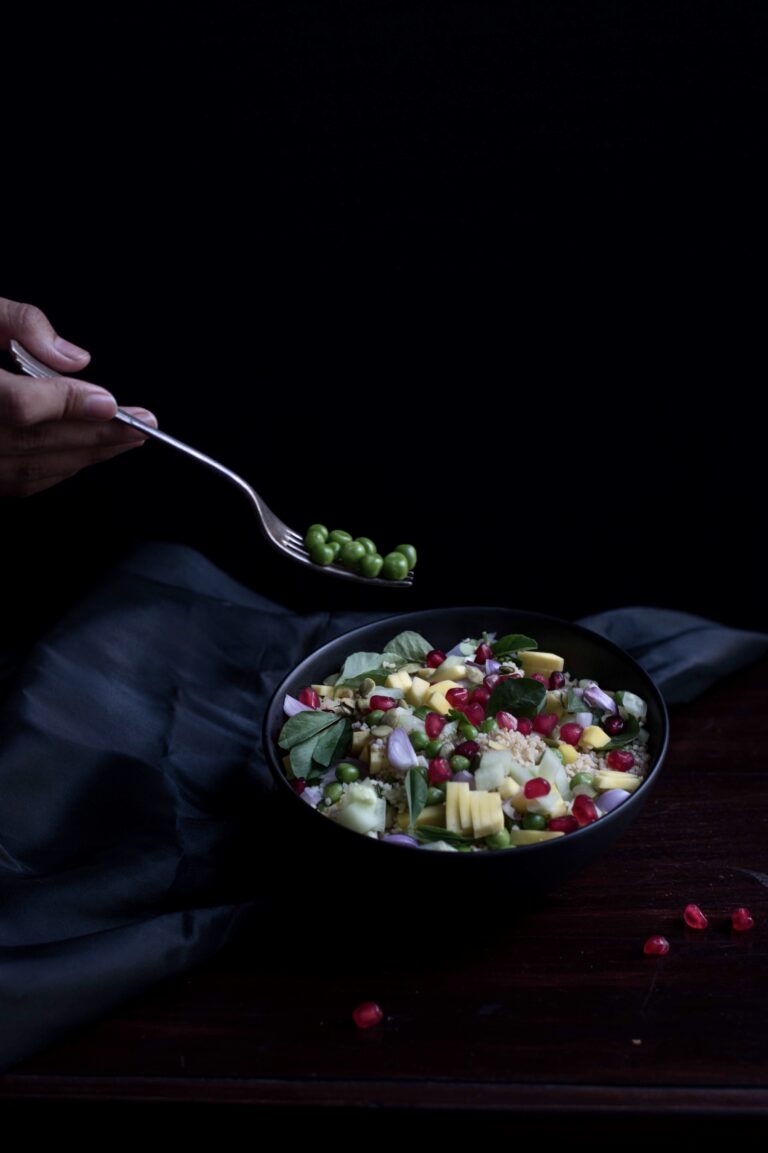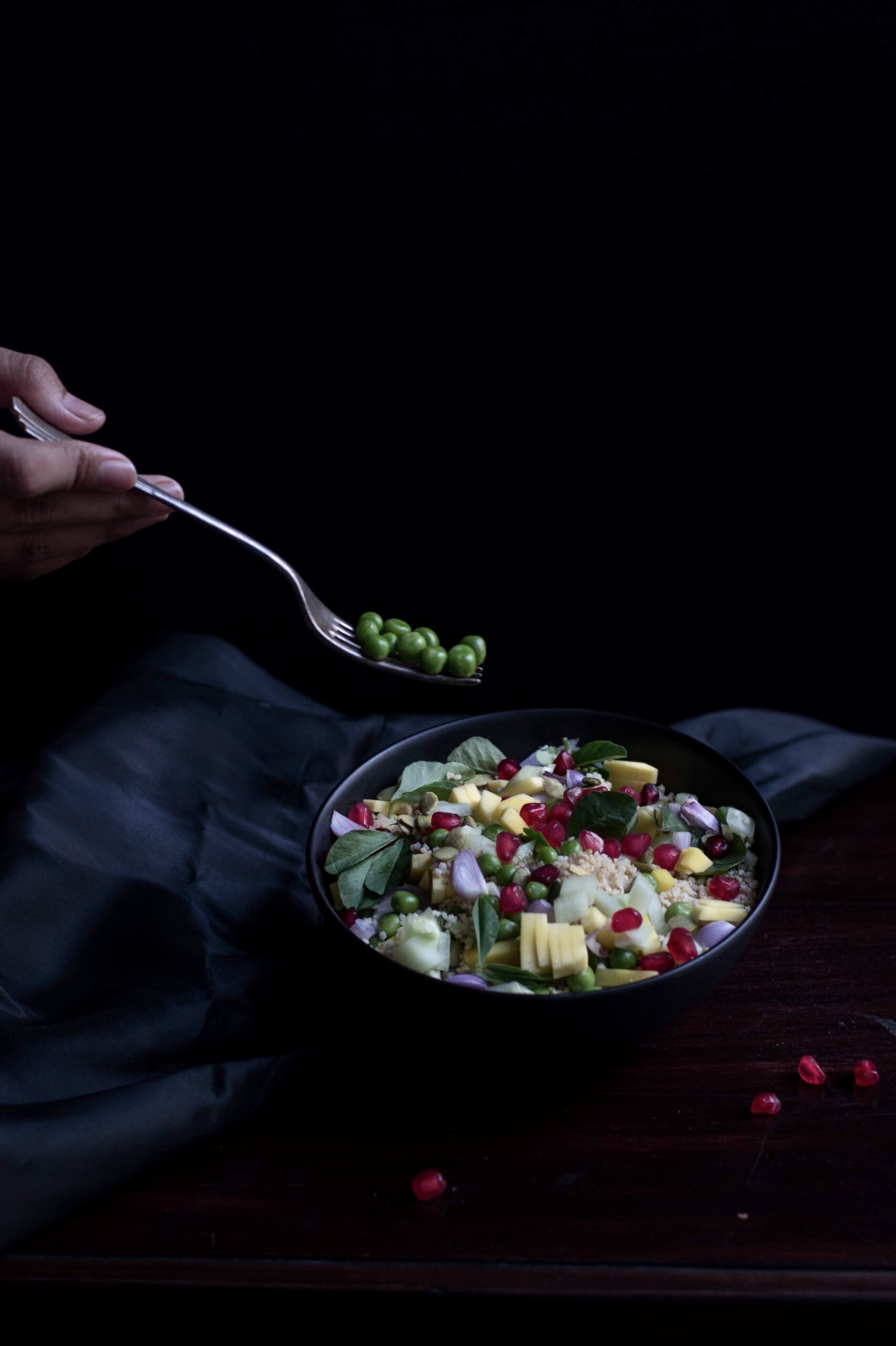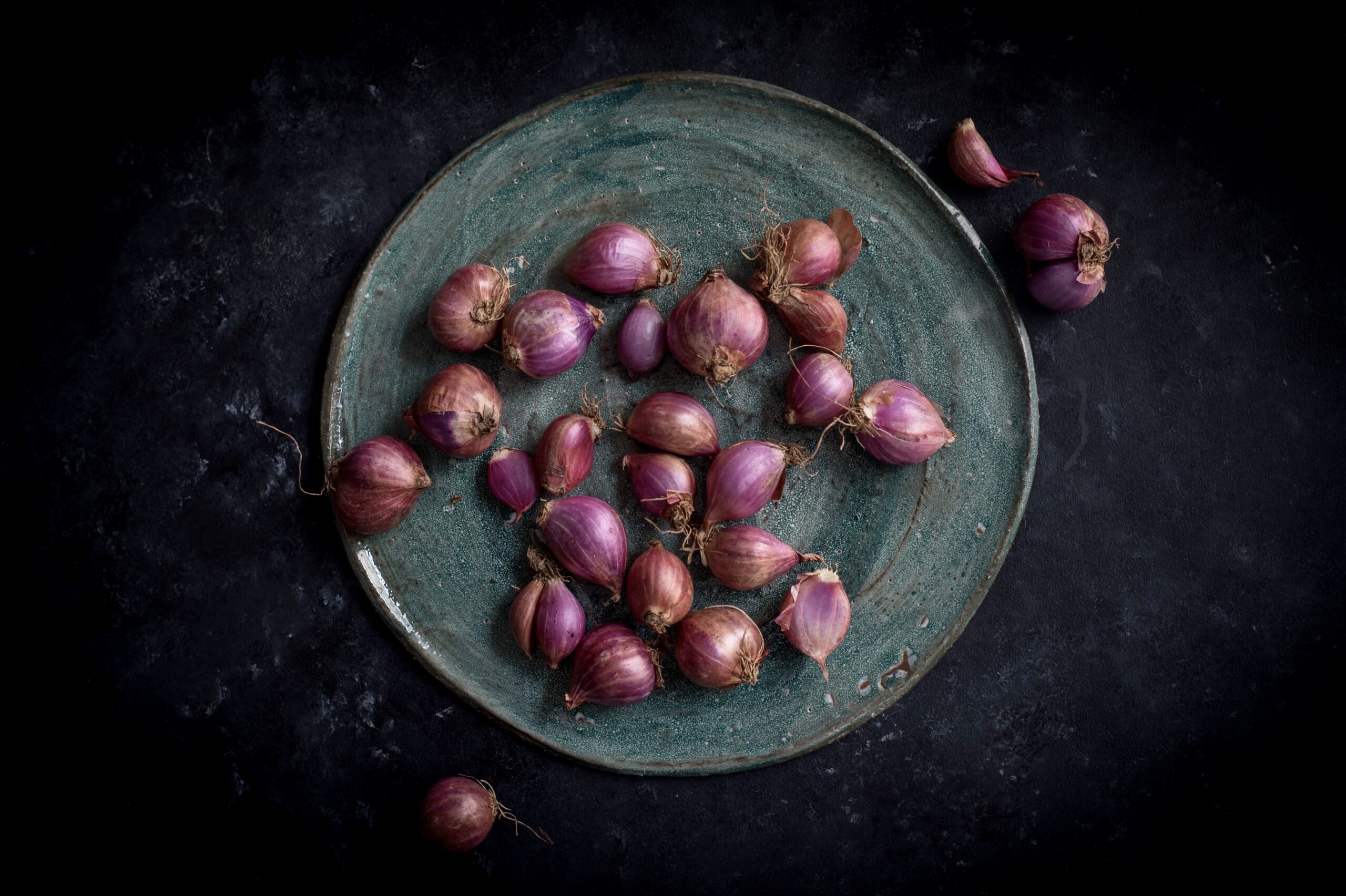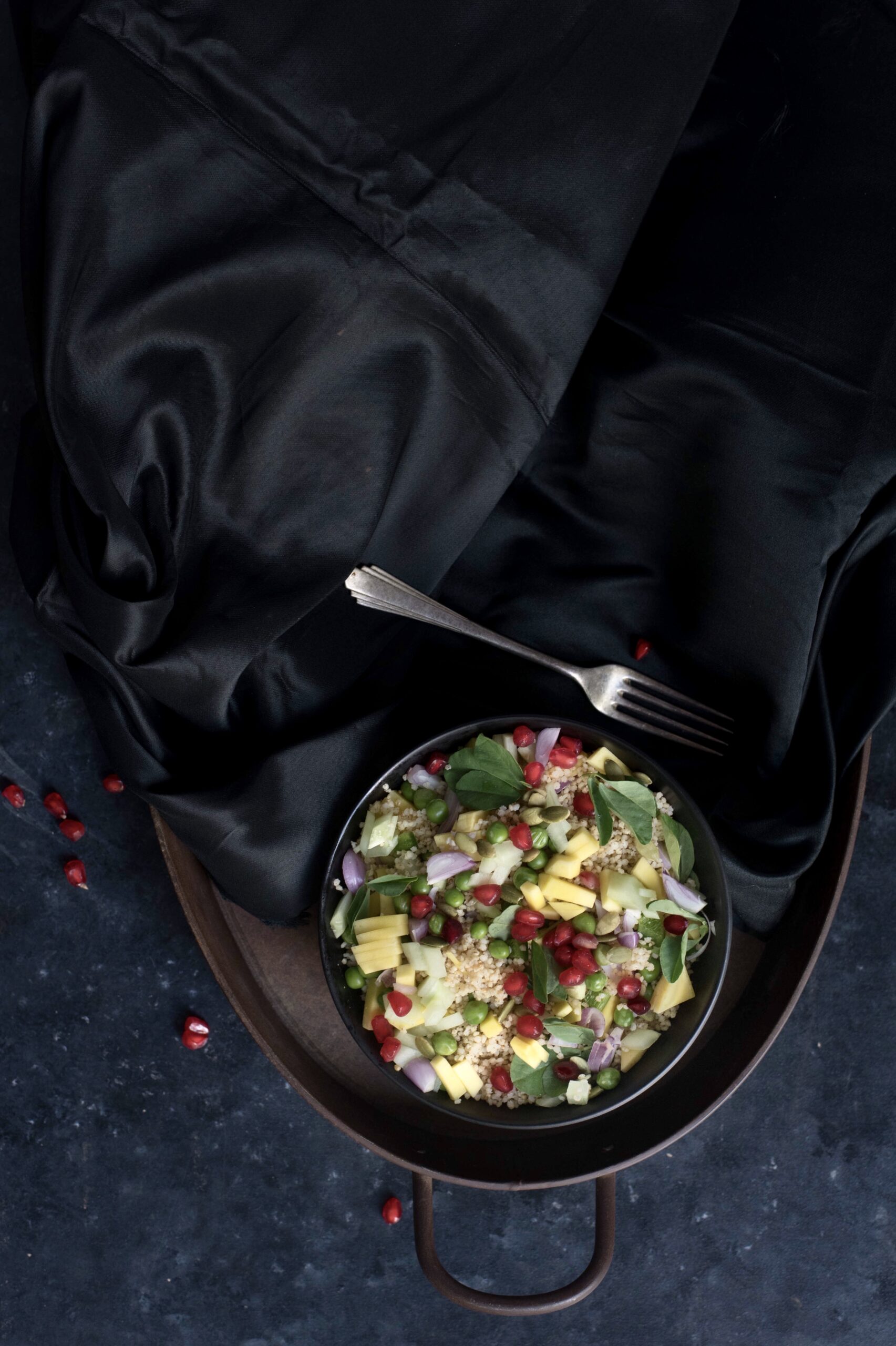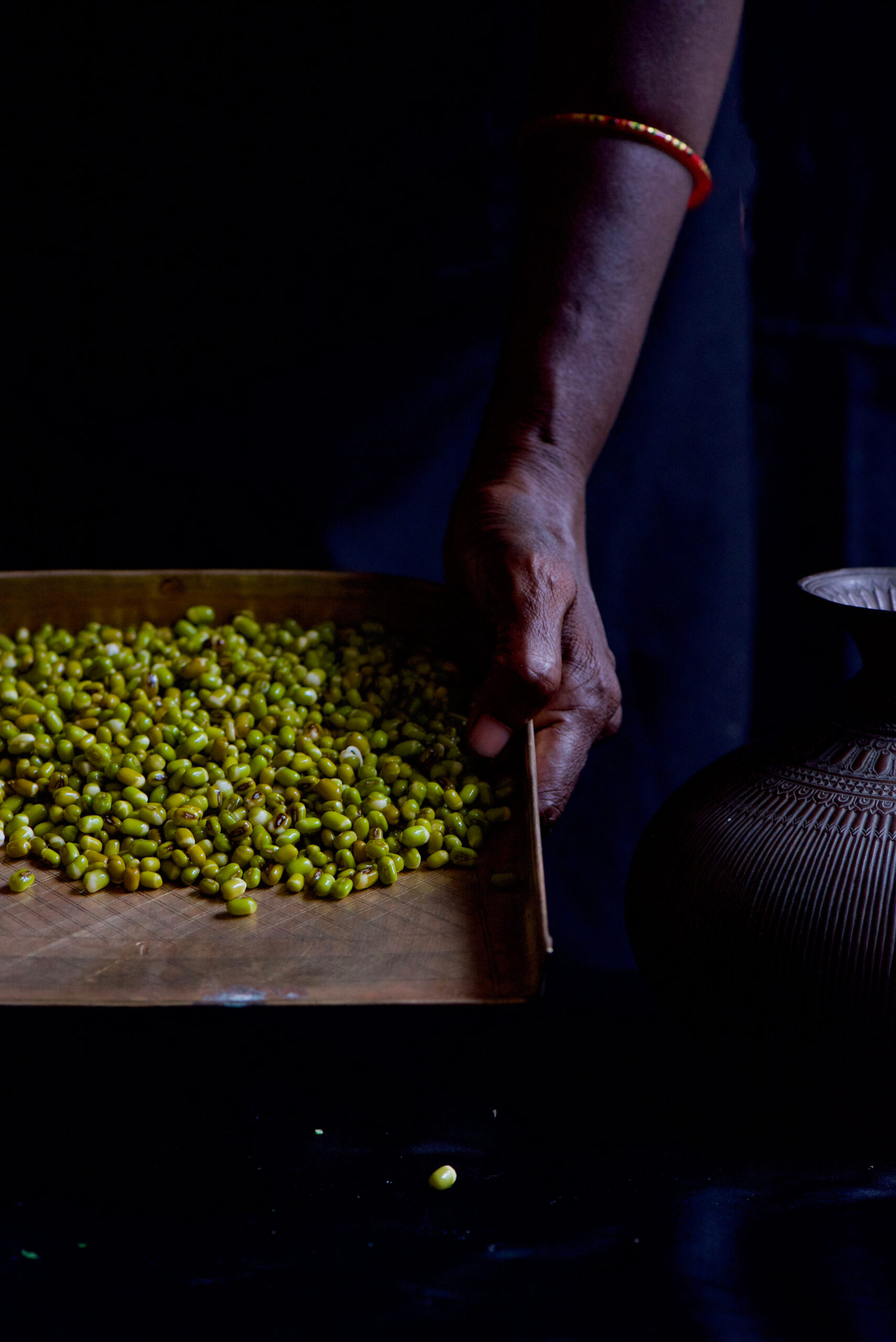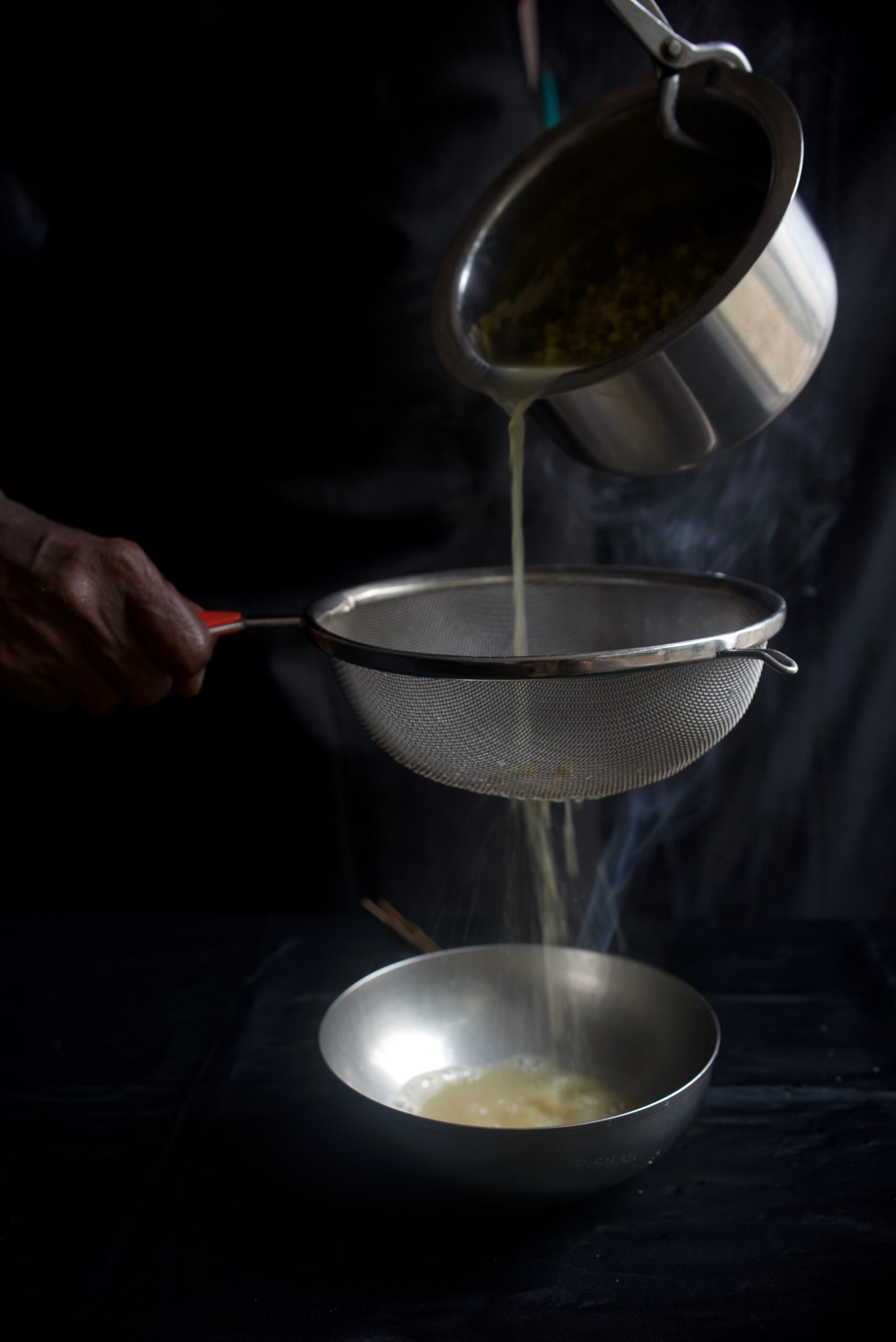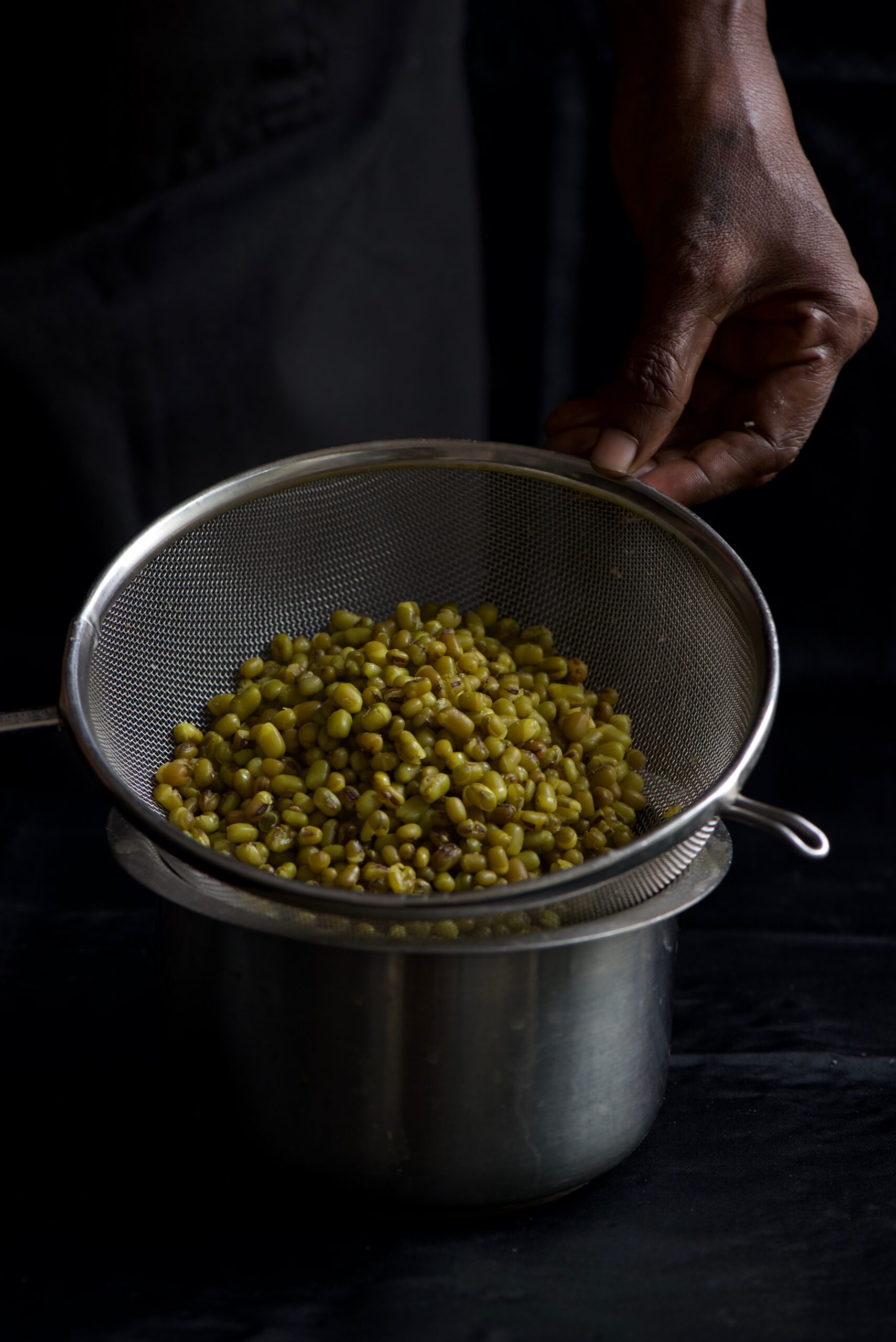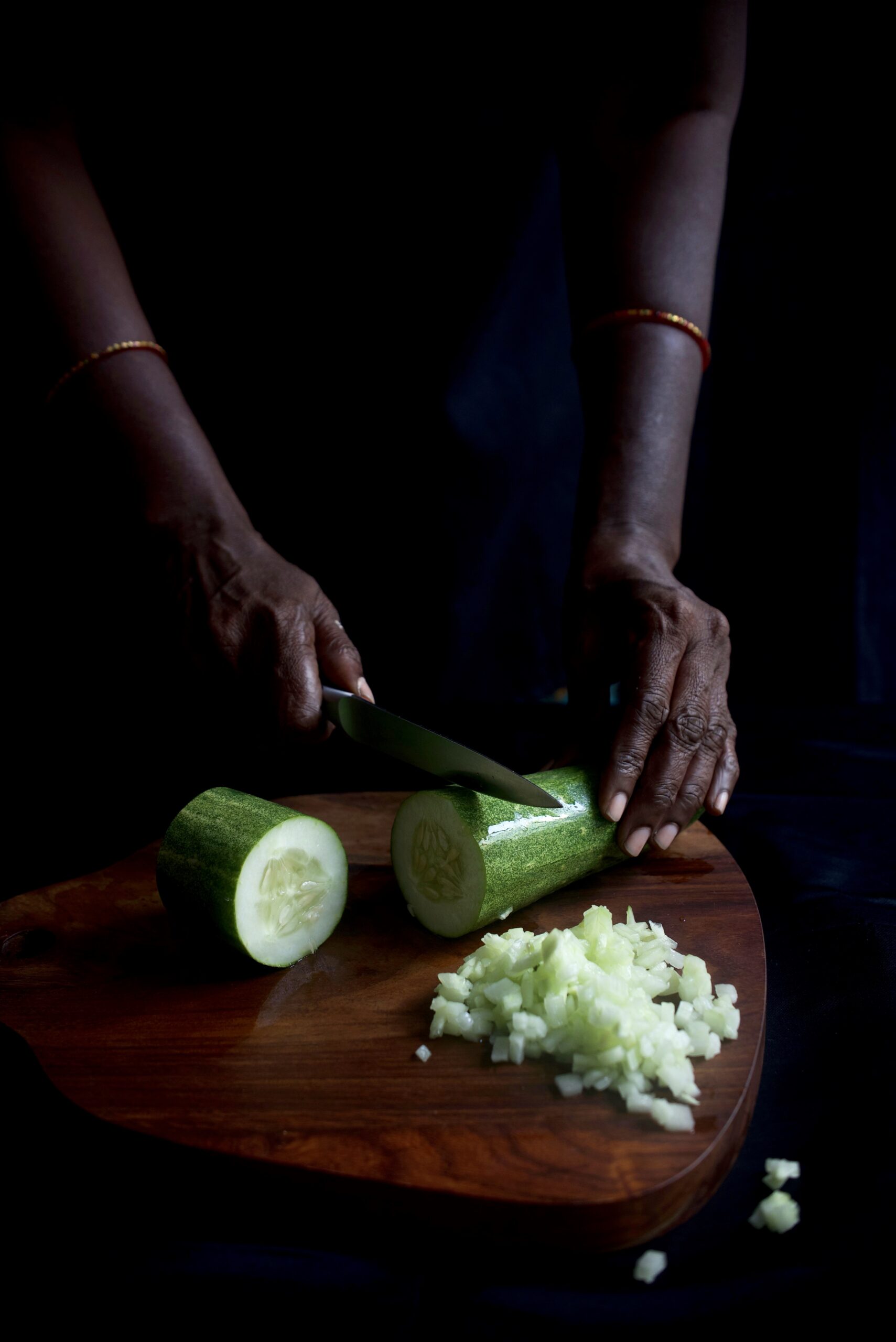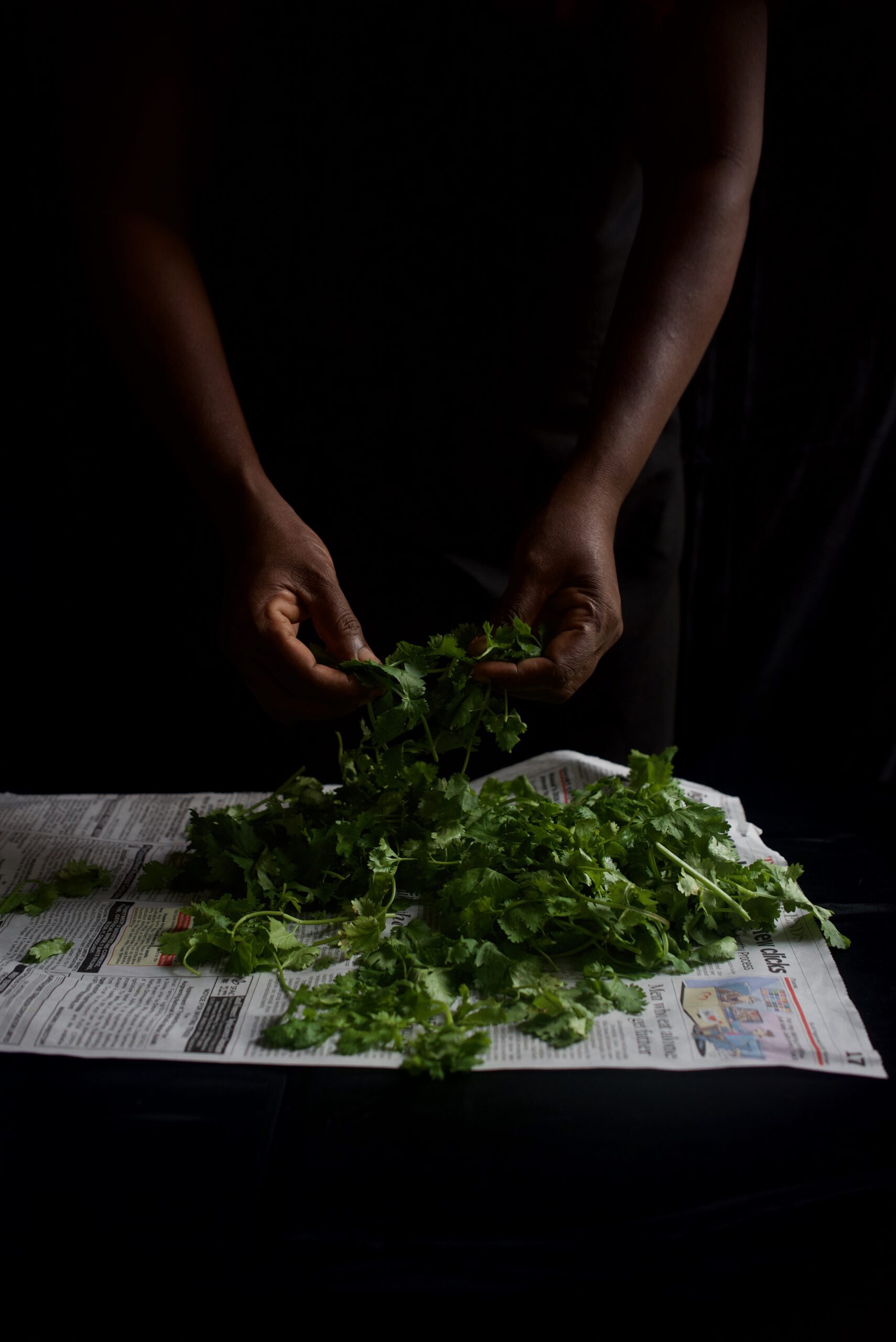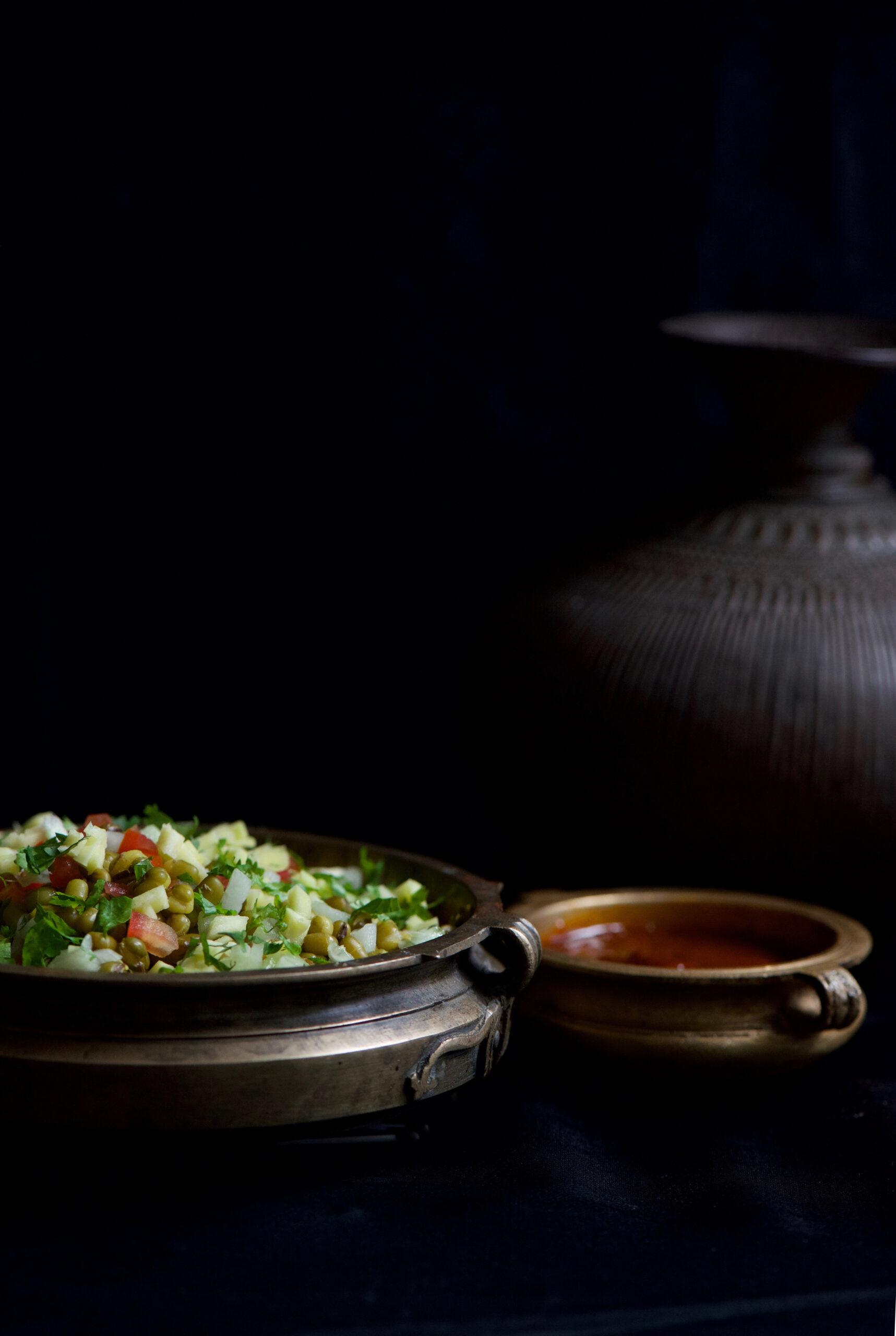I was very fortunate to receive a batch of delicious Alphonso mangoes from Nashik, procured by a friend. Nashik is most famous for this variant, one of hundreds grown throughout the country, as it enjoys the ideal clime for its cultivation. I believe they are also grown in Andhra Pradesh and other places, but the Maharashtra Alphonso is the one with the beautiful orange flesh. The colour caught my eye as I cut the fruit open, and inspired me to do a mango series here. To kick things off, here is this filling and vibrant mango salad. This lovely dish is a way to bring a bright spark of healthiness into your diet, without compromising even the slightest bit on taste and flavour.
You may be wondering why I’m talking about good health again after posting three decadent cake recipes back to back. This is why: I believe we are at a point during this COVID-19 crisis when we are ready to empower ourselves to return to normalcy. There was a time and a place for mood-uplifting solutions, but now is the moment when we must accept that the pandemic is here to stay for a while. This means that we need to be more responsible in all aspects of life, pay closer attention to our health, and bring our diets back into balance as well.
The cake recipes were expressions of joy at a time when we all felt confused, terrified and hopeless, and this mango series retains the delectability factor but with a more nutritious angle. I’ve always been very health-conscious, as long time readers will most likely know. I’m not getting any younger, and cutting down on carbs, increasing protein intake and prioritising general well-being and mindful caution are important to me. Honestly, I feel excited about this. I believe we will be able to rise to this challenge. I think this is probably the reason why the human race is at the top of the pyramid of Earth’s many species. No matter what happens, we slowly achieve a sense of normalcy and practicality. We believe in and foster hope.
Of course, it being mango season makes this turn towards pragmatism all the sweeter. Mangoes are lower in calories relative to other fruits, and are a source of Vitamins A and C and beautifying beta-carotene (which is good for the skin). They’re so tasty that it’s hard to believe they could be beneficial, but like all fruits, they are.
This mango salad that I’ve been making lately is such a super hit at home that my family has begun asking for it daily. Considering that the season is limited, usually lasting till the end of June but subject to climactic changes, I’m happy to indulge everyone.
This is a recipe that I came up with, and it layers the sweet fruit with some Asian flavours, courtesy of soy sauce, lemongrass and a sprinkling of peanuts. I add mung bean sprouts for protein, and you may also wish to sauté long strips of tofu or chicken and mix them in if you prefer. Both work well with the Asian flavours, and boost the protein quotient. I sometimes add a grain like quinoa or wild rice to make it an even more textured and filling meal. Other vegetables I’ve used also add a nice crunch, contrasting the soft fleshiness of the mangoes.
It looks and tastes absolutely fantastic – I enjoyed this whole bowl for lunch right after my photoshoot!
I’ve been loving thinking up different ways to make mangoes an ingredient in different dishes, some of which you’ll see on this blog soon. I’ve also been trying to make mango pickle with raw mangoes, growing on one of my trees at home. Gujarati pickles need to be sun-dried in the initial stages, so I am making the most of this hot weather. You could say I’ve been making the most of mangoes, as well as making the most of the summer sun.
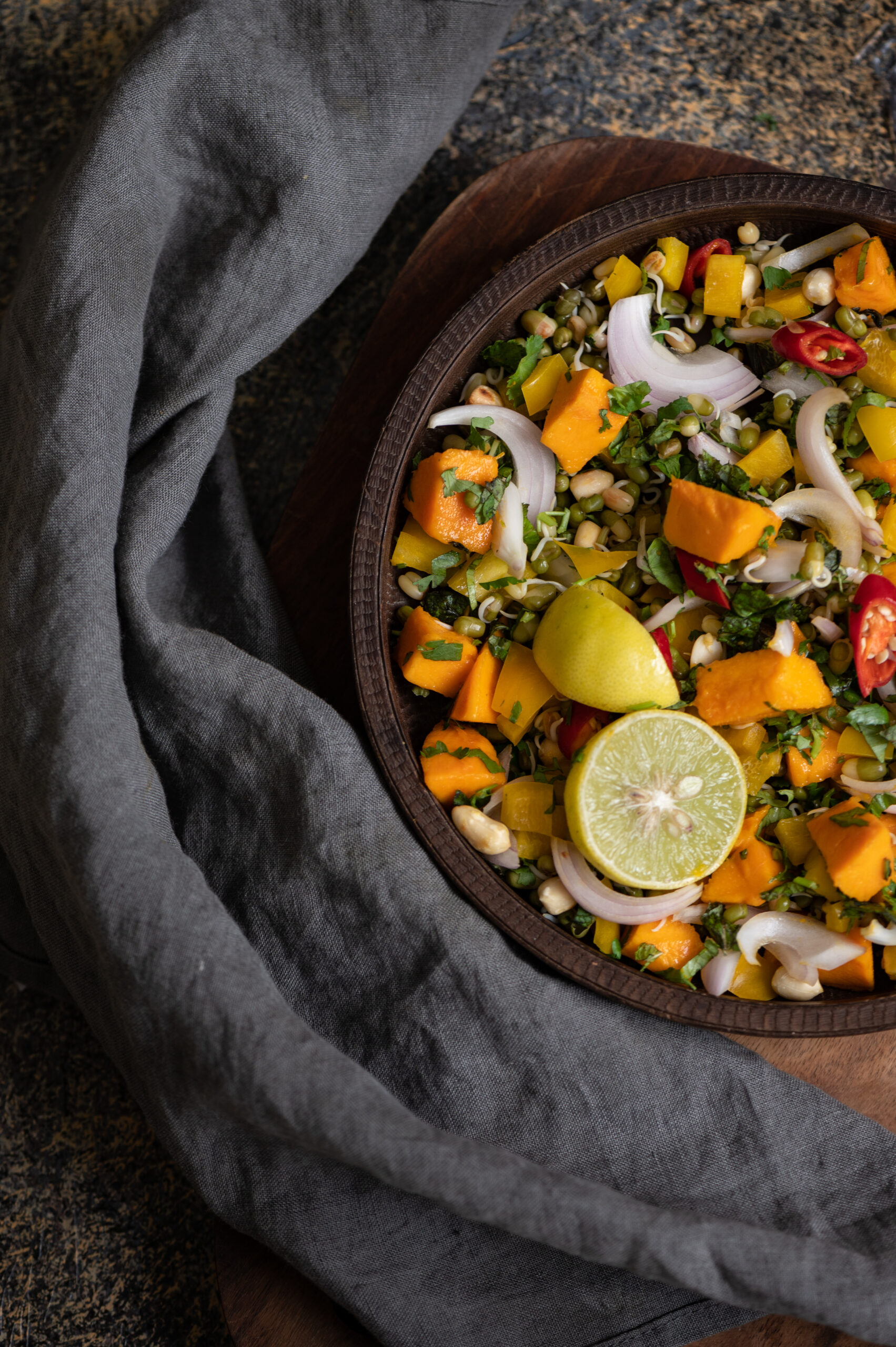
Mango Salad
(Yield: 1 bowl)
1 cup freshly cut ripe, firm mango
½ cup bell peppers
½ cup sliced onions
½ cup sprouted mung beans
1 tablespoon chopped mint leaves
1 tablespoon chopped coriander leaves
½ teaspoon finely cut lemongrass
2 cloves garlic
1 teaspoon finely cut jalapeños
½ chopped red chilli
2 tablespoons roasted peanuts
Dressing:
Salt to taste
1 teaspoon soy sauce
A drizzle of honey
1 tablespoon lemon juice
1 pinch pepper
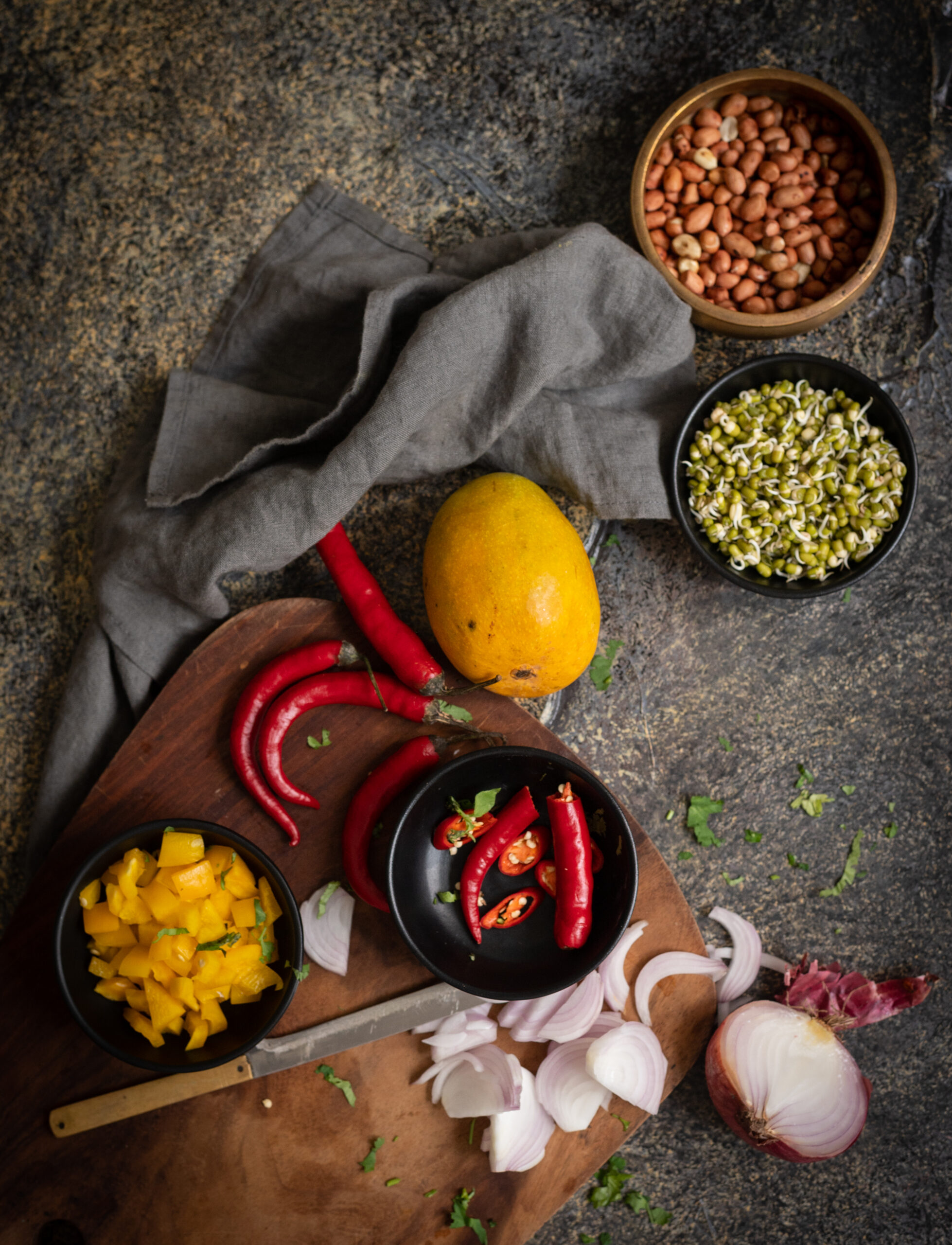
Mix the salad ingredients together. It’s always best if they’ve been chilled.
Stir the dressing ingredients together well, separately.
Now, pour the mixed dressing over the salad ingredients. Stir gently to assemble the dish, making sure that the dressing coats all of the salad. Voila! The simplicity of preparing this dish is an extra plus in these sweltering months, cutting down on your time in the kitchen.
Refrigerate for a short while, so that you’ll get a fresh and chilled salad at serving time.
Then, all that’s left to do is to enjoy it! You’ll find that the sweetness of the soft ripe mangoes is enhanced by the tanginess of the dressing, and marvellously contrasted by the crunchiness of the nuts and vegetables. What you have is an interestingly textured, and exceedingly tasty salad that can be a starter, a full meal, or a snack – depending entirely on your mood.
I’m in the mood for mangoes any day of this season – are you? Let me take this opportunity to wish all who are celebrating the occasion a very happy Eid. I’d love to hear if my mango salad becomes a part of your celebrations!
